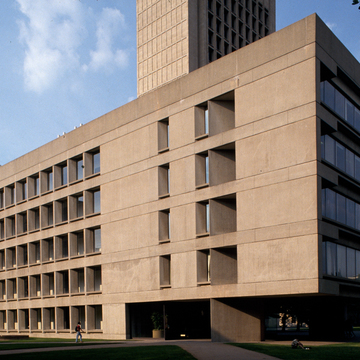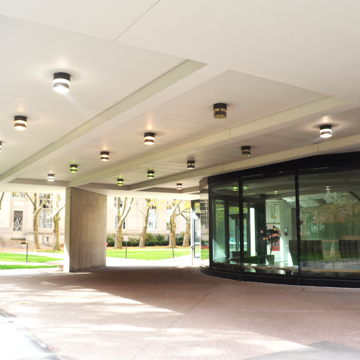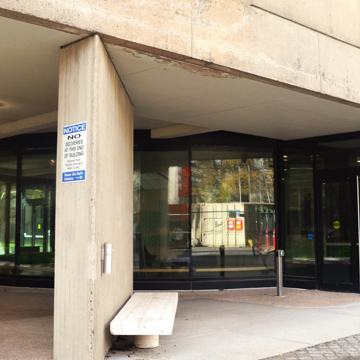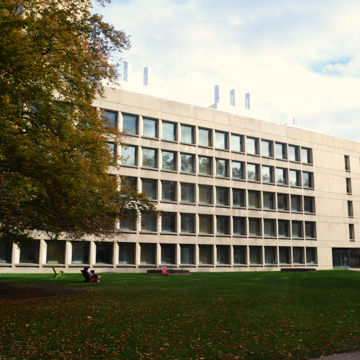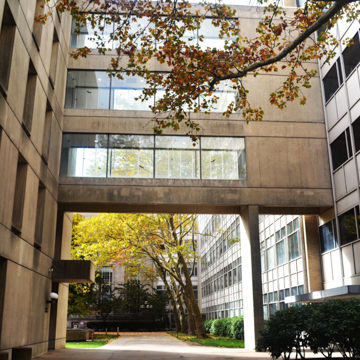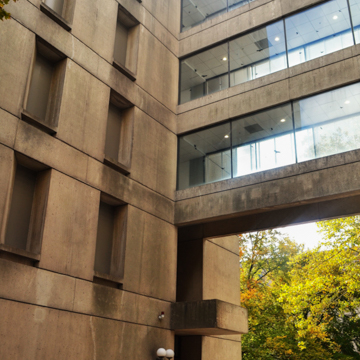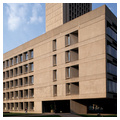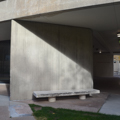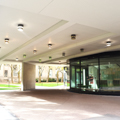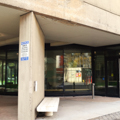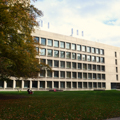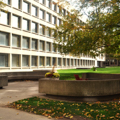You are here
Dreyfus Chemistry Building (Bldg. 18)
This seven-story building is perpendicular to the long rectangular Dorrance and Whitaker buildings (1952 and 1963, Anderson, Beckwith and Haible) and linked by a glass and concrete bridge. An exemplar of modernism with its transparent glass curtain wall, the earlier buildings contrast with the original masonry structures of the institute. Two cantilevered diagonal beams define the south end of the structure, whose facade is articulated by a grid of recessed windows. The renovation focuses on improving environmental and infrastructure systems, resulting in a more open plan, increased energy efficiency, and improved natural light in the labs.
Writing Credits
If SAH Archipedia has been useful to you, please consider supporting it.
SAH Archipedia tells the story of the United States through its buildings, landscapes, and cities. This freely available resource empowers the public with authoritative knowledge that deepens their understanding and appreciation of the built environment. But the Society of Architectural Historians, which created SAH Archipedia with University of Virginia Press, needs your support to maintain the high-caliber research, writing, photography, cartography, editing, design, and programming that make SAH Archipedia a trusted online resource available to all who value the history of place, heritage tourism, and learning.











